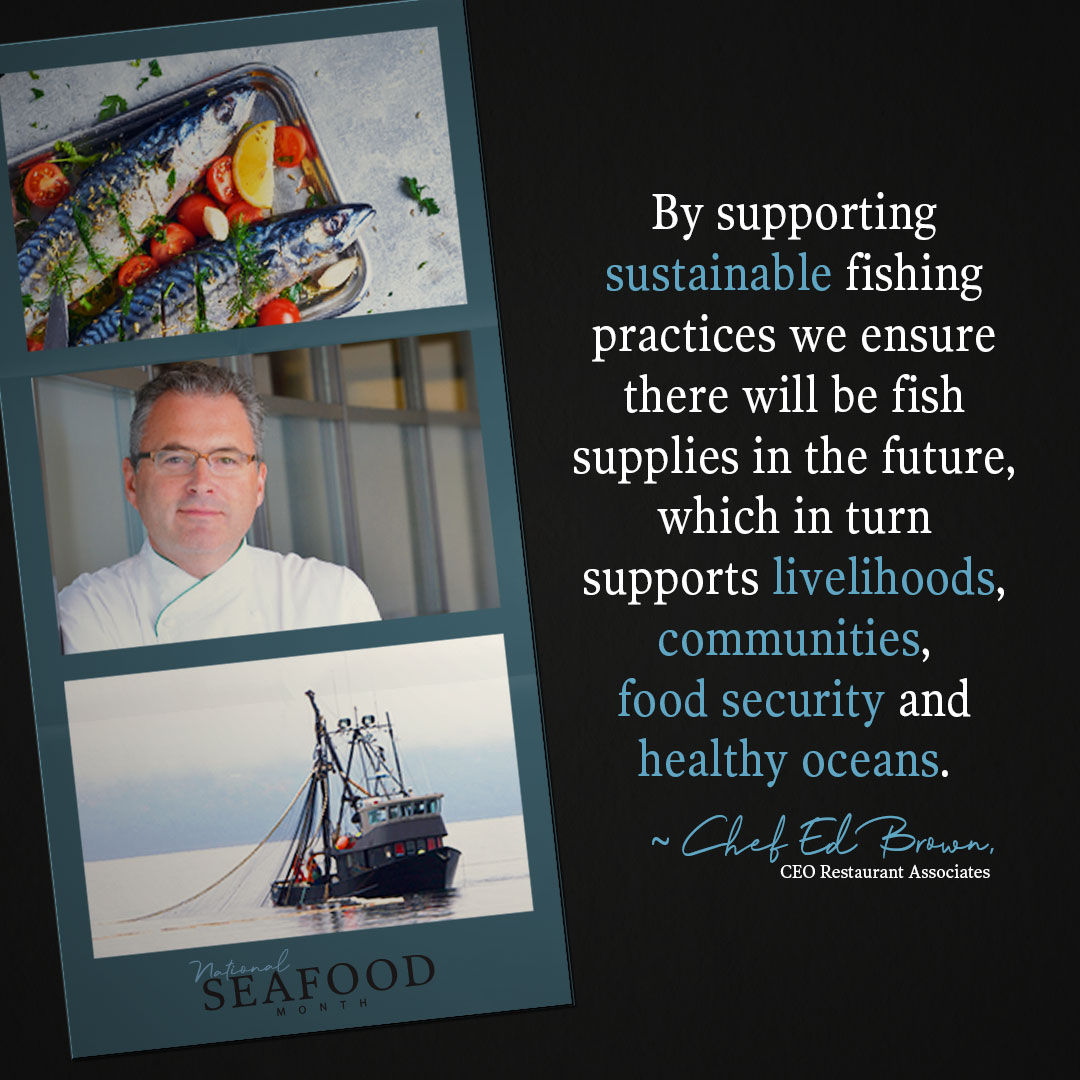#NationalSeafoodMonth — A Conversation with Amy Keister, Global Director of Sustainability and Chef Ed Brown, CEO of Restaurant Associates
In honor of #NationalSeafoodMonth this October, Compass Group’s Global Director of Sustainability Amy Keister sat down with Restaurant Associates’ CEO Chef Ed Brown. Chef Ed Brown and Restaurant Associates do such an incredible job promoting sustainable seafood across all their locations, not just in October, but all year. Read Amy’s conversation with Chef Ed below to learn how intentionally combating seafood waste can help feed more people.

Amy: Chef, throughout your career, you have focused on sustainability, specifically with seafood because you believe what we menu impacts our health and our planet’s health. Can you share why it matters for us to incorporate sustainable seafood into our menus?
Ed: Seafood is an important source of protein for millions of people around the world. By supporting sustainable fishing and aquaculture practices, we ensure there will be fish in the future, which in turn supports livelihoods, communities, food security and healthy oceans.
Amy: We talk a lot about food waste but not a lot about food waste in our seafood supply chain. Can you elaborate on that a bit more?
Ed: It is estimated that every year almost half the seafood supply in the U.S. is wasted – that’s about 500 million pounds of protein waste. Globally, 110 billion pounds are wasted, enough to feed more than 2.7 million people for a year. This form of food waste further contributes to overfishing, which has of course precipitated a steep decline in marine wildlife populations.
A lot of the food waste found in our waters is through bycatch, which unfortunately means the seafood is most often not alive when thrown back in the sea. The most impactful way our organization and industry can reduce waste in the seas is to combat this fishing practice. If we incentivize fishermen by offering to purchase bycatch and use that fish – if it meets our sustainability policy, which is Seafood Watch Green or Yellow rated – it would be an incredible way to save our oceans and make an impact.
In addition, we can cut waste in a variety of practices: using creative ways to use offcuts, different uses of fish skin from chips to cow leather replacement, dry aging fish to minimize deterioration while on ice, and sourcing from community-supported fisheries where we are buying directly from fishermen.
Amy: For our readers, how can they be a part of the solution and support sustainable seafood at home?
Ed: Choose seafood caught or farmed via environmentally sound methods. Monterey Bay Aquarium Seafood Watch has a guide on which fish and from which parts of the world are most sustainable for consumption.
And don’t snub frozen seafood! In some cases, “fresh” fish was actually previously frozen and thawed for sale. Fish that is quickly and properly frozen upon harvest can be fresher and better quality according to food safety standards and their longer shelf life reduces food waste. If possible, buy whole fish straight from the source, which not only reduces waste but also commands a lower price per pound of protein.
And find uses for your leftover seafood – a little bit of creativity can go a long way! Turn remaining meat into fish cakes, crab cakes or chowders, or toss seafood into pasta, fried rice, or salad. You really can be a catalyst for change in your own home.